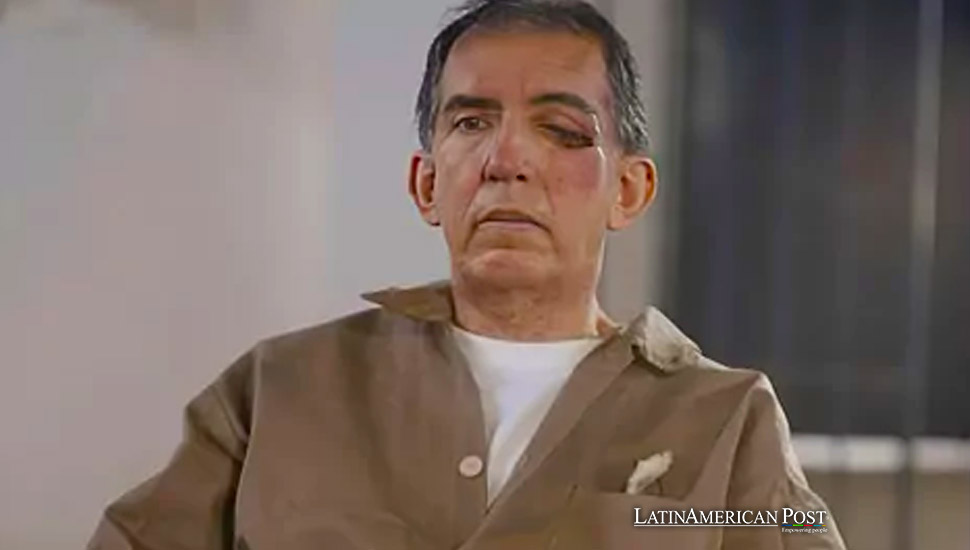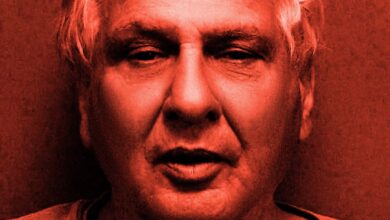Serial Killers of Latin America: The Grim Reality Behind the Numbers

While serial killers are often associated with the United States and developed countries, four of the top ten most prolific serial killers are from Latin America. With staggering victim counts, their stories reveal a chilling history often overlooked by global media.
When most people think of serial killers, names like Ted Bundy, Jeffrey Dahmer, or the Zodiac Killer may come to mind, reinforcing the perception that these heinous crimes are mainly a phenomenon in the United States or other developed countries. However, this assumption overlooks the chilling reality that some of the deadliest serial killers in modern history hail from Latin America. Among the top ten serial killers with the highest known victim counts, four come from this region, with two taking the top spots.
These murderers, operating in countries like Colombia, Peru, Ecuador, and Brazil, have claimed the lives of hundreds—predominantly targeting children and young girls. Their stories reflect not only the capacity for human cruelty but also the broader social and economic conditions that may have allowed their horrifying crimes to continue for years before being apprehended.
1. Luis Garavito: The Beast of Colombia
Luis Garavito, known as “La Bestia” (The Beast), is widely considered the deadliest serial killer in history, with a confirmed victim count of 193 boys, though the actual number could exceed 300. Garavito’s reign of terror spanned seven years, from 1992 to 1999, across Colombia and neighboring Ecuador and Venezuela. His targets were primarily vulnerable street children, ranging in age from six to sixteen, whom he lured with promises of gifts, food, or work.
Garavito’s crimes involved unspeakable acts of torture, sexual abuse, and murder. His capture in 1999 came as a result of meticulous police work after the discovery of several mass graves. During interrogation, Garavito confessed to killing 140 boys, detailing the locations of many of their bodies. His initial sentence was a record-breaking 1,853 years in prison. However, due to Colombian law, which limits the length of prison sentences, and his cooperation in locating victims, his sentence was reduced to 22 years.
The fact that Garavito was scheduled for parole in 2023 outraged many Colombians and sparked debate about the country’s legal system, particularly regarding the leniency of sentences for such horrific crimes. However, Garavito died in prison on October 12, 2023, before he could be released, bringing an end to one of the most notorious criminal careers in modern history.
2. Pedro López: The Monster of the Andes
If Garavito is considered the deadliest serial killer, then Pedro López, known as “The Monster of the Andes,” is a close second. López’s crimes are equally appalling, with a confirmed victim count of 110 and a suspected total exceeding 300. Operating in Colombia, Ecuador, and Peru between 1969 and 1980, López primarily targeted young girls between the ages of eight and twelve.
López’s criminal career began early, shaped by a traumatic childhood filled with abuse and neglect. After being arrested for stealing cars, he confessed to police that he had murdered over 100 girls. His chilling confession led authorities to mass graves where dozens of young victims were found. Despite this, López was convicted of only three murders in Ecuador in 1983, serving 14 years before being released in the late 1990s due to Ecuadorian laws that capped prison sentences.
What happened to López after his release remains unclear, as he vanished after being deported to Colombia. Authorities fear he may have continued his killing spree, and his current whereabouts are unknown. The fact that one of history’s most prolific child murderers was set free highlights the challenges Latin American legal systems face in dealing with such heinous criminals.
3. Daniel Camargo Barbosa: A Killer Who Crossed Borders
Daniel Camargo Barbosa, a Colombian serial killer, left a trail of devastation across Colombia and Ecuador during the 1970s and 1980s. His confirmed victim count stands at 72, but he is believed to have raped and murdered more than 150 girls. Like Garavito and López, Camargo preyed on vulnerable children, primarily targeting young girls, who he thought were virgins.
Camargo was initially arrested in Colombia for a string of brutal murders but escaped from prison in 1984. After fleeing to Ecuador, he resumed his killing spree, strangling and mutilating his victims. He was eventually captured again in 1986 after the body of a young girl was discovered, leading to a confession that linked him to dozens of unsolved murders.
Camargo was sentenced to prison in Ecuador, reportedly incarcerated alongside Pedro López. However, unlike López, Camargo met a violent end in jail. In 1994, he was murdered by the nephew of one of his victims, bringing a brutal conclusion to the life of another prolific serial killer who had terrorized Latin America for over a decade.
4. Pedro Rodrigues Filho: Brazil’s Notorious Killer
Brazil’s most infamous serial killer, Pedro Rodrigues Filho, also known as “Pedrinho Matador” (Killer Petey), is unique among serial murderers for the nature of his crimes. Unlike Garavito, López, and Camargo, Rodrigues Filho’s victims included not only civilians but also other criminals. Born in 1954, Rodrigues Filho claimed to have committed his first murder at the age of 14, targeting a local politician responsible for his father’s firing.
Throughout his criminal career, Rodrigues Filho claimed to have killed over 100 people, with 71 confirmed victims. His victims included his father, whom Rodrigues Filho murdered and then consumed a piece of his heart in a gruesome act of revenge for the murder of his mother. Even while incarcerated, he continued his violent streak, killing 47 inmates, many of whom he deemed “undesirable” due to their crimes.
Rodrigues Filho was sentenced to 128 years but served only 30, the maximum sentence allowed under Brazilian law. He was released in 2018 but was murdered by two men in 2023. His story, while filled with violence, presents a more complex figure—a killer who, in his mind, was delivering justice to those he saw as evil.
5. Florisvaldo de Oliveira: The Vigilante Cabo Bruno
Although Florisvaldo de Oliveira, also known as “Cabo Bruno,” is not in the top 10 list of most prolific serial killers, his story is no less gripping. A former police officer turned vigilante, de Oliveira operated on the outskirts of São Paulo in the early 1980s, where he took the law into his own hands. Over just one year, from 1982 to 1983, he was responsible for the murders of over 50 people, primarily targeting criminals.
Unlike other serial killers who preyed on innocent victims, Cabo Bruno saw himself as a force of justice, eliminating those he believed were threats to society. His actions, however, blurred the lines between law enforcement and cold-blooded murder, as his vigilante killings garnered both fear and support from local communities. Arrested and convicted for his crimes, de Oliveira spent decades in prison before being released in 2009. However, his life ended violently in 2012 when unknown assailants murdered him, a chilling end to the life of a man who lived by a gun.
Though ranked 16th in victim count, Cabo Bruno’s story is a haunting example of how law and justice can become dangerously intertwined with personal vengeance.
6. Fernando Hernández: Mexico’s Shadowy Killer
Fernando Hernández, though ranked 27th in terms of confirmed victim count, presents one of Mexico’s most chilling cases. Arrested in 1999 after confessing to 100 murders and six kidnappings, Hernández claimed responsibility for a spree of violence across five southern Mexican states. Despite later retracting his confession—claiming he had been beaten and his family threatened by police—the sheer scale of his alleged crimes is staggering. Convicted of 33 murders, he was sentenced to 50 years in prison.
Hernández’s story is steeped in mystery and controversy. Before his final arrest, he had escaped prison twice, once after being arrested for murder in 1986. His ability to evade justice for so long, coupled with his high victim count, has fueled speculation that he may be Mexico’s most prolific serial killer. Attempts to commit suicide in prison added another dark layer to his enigmatic legacy. Whether or not all his confessions were genuine, Hernández’s reign of terror has left a lasting impact on the country, casting a long shadow over Mexico’s criminal history.
The Complexities of Justice in Latin America
The stories of these four men—Luis Garavito, Pedro López, Daniel Camargo Barbosa, and Pedro Rodrigues Filho—raise uncomfortable questions about justice in Latin America. Despite their horrific crimes, each of these men benefitted from legal systems that were ill-equipped to deal with serial killers on such a massive scale. Whether through sentence reductions, prison escapes, or legal loopholes, all four killers were able to avoid facing the full consequences of their actions.
Part of the issue lies in the legal frameworks of countries like Colombia, Ecuador, and Brazil, where the maximum allowable prison sentences often fall short of what many consider appropriate for crimes of this magnitude. For instance, despite being responsible for hundreds of deaths, both Garavito and López were sentenced to prison terms that, in developed countries, would be seen as shockingly lenient.
Furthermore, the sheer scale of these men’s crimes suggests that local law enforcement agencies were often overwhelmed or underprepared to deal with the complexities of serial murder investigations. In countries grappling with social and economic instability, resources for thorough criminal investigations are usually lacking, allowing killers like Garavito and López to operate with impunity for years before being caught.
Globalization and the Perception of Serial Killers
The global perception of serial killers has long been skewed towards developed nations like the U.S., where high-profile cases receive extensive media coverage and are often romanticized or sensationalized in movies, books, and documentaries. In contrast, the stories of Latin American serial killers like Garavito, López, Camargo, and Rodrigues Filho have often been overlooked by international media despite their staggering victim counts.
This discrepancy reflects a broader issue of how serial killers are understood in a global context. The conditions that allow serial killers to thrive—social isolation, economic instability, weak legal systems—are not unique to the U.S. or other developed countries. Latin America’s history of violence, poverty, and political turmoil may have contributed to the rise of some of the deadliest serial killers the world has ever seen.
Also read: Cuddly Criminals: Brazil’s Dark Underbelly of Stuffed Animal Heists
By examining the stories of these killers, we can challenge the narrative that serial killers are a predominantly American phenomenon. The grim reality is that serial killers exist in every part of the world, and their crimes often reveal deep-seated social issues that demand attention.





